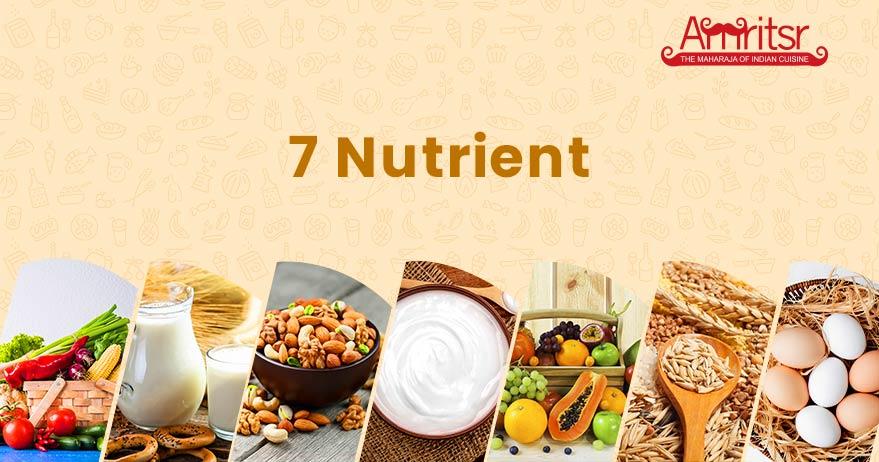Table of Contents
- Exploring Affordable Staples for Every Kitchen
- Nutrient-Rich Foods That Wont Break the Bank
- Creative Recipes for Budget-Friendly Meals
- Smart Shopping Tips to Maximize Your Savings
- Understanding the Benefits of Meal Planning for Cost Efficiency
- Q&A
- To Wrap It Up


Exploring Affordable Staples for Every Kitchen
When it comes to stocking your kitchen on a budget, the key is to focus on items that offer versatility and nutritional value without breaking the bank. Beans and lentils, for example, are not only affordable but are also packed with protein and fiber. They can be used in everything from soups and stews to salads and side dishes, making them a fantastic staple for any meal plan. Adding a variety of canned tomatoes can enhance flavors and serve as a base for sauces, casseroles, and curries, ensuring you can whip up hearty meals with little effort.
Another excellent choice is rice and other whole grains, which can serve as a filling foundation for countless recipes. Brown rice, quinoa, and oats can be purchased in bulk at a fraction of the cost, providing long-lasting nutrition for your family. These grains can be paired with vegetables, proteins, or seasonings to create satisfying dishes. Don’t overlook the power of frozen vegetables, which provide all the nutrients of fresh produce at a lower price point and with the added bonus of a longer shelf life, allowing you to enjoy the bounty of the season all year round.
| Affordable Staples | Benefits |
|---|---|
| Beans | High in protein and fiber, versatile in cooking. |
| Canned Tomatoes | Affordable flavor booster for various dishes. |
| Whole Grains | Filling and nutritious, great for meal prep. |
| Frozen Vegetables | Nutritious, cost-effective, and long-lasting. |
Moreover, incorporating seasonal fruits and vegetables can significantly reduce your grocery bills while ensuring your meals are vibrant and flavorful. Items like carrots, cabbage, and potatoes often come at a low price point and can be stored for a longer period, reducing food waste. Lastly, don’t forget the options available in the spices aisle! Stocking up on essential spices can transform simple dishes into culinary delights, allowing you to experiment with new flavors without making a hefty investment.


Nutrient-Rich Foods That Wont Break the Bank
Eating healthy on a tight budget may seem challenging, but there are plenty of nutrient-rich foods that provide excellent value for money. Incorporating these foods into your meal plan not only supports your health but also helps you save money. Some of the best options include:
- Legumes: Beans, lentils, and chickpeas are all affordable sources of protein and fiber. They can be used in various dishes, from soups to salads, and their versatility means you can enjoy them in many ways.
- Frozen Vegetables: Often more affordable than fresh produce, frozen vegetables retain their nutrients and are easy to add to any meal. Look for sales on multi-packs or store brands to find budget-friendly options.
- Whole Grains: Foods like brown rice, quinoa, and oats are not only filling but also nutritious. They’re often cheaper when bought in bulk, allowing you to prepare a variety of wholesome dishes without overspending.
It’s also beneficial to explore some of the more unconventional, but budget-friendly, superfoods that can be incorporated easily into your diet. Consider these options:
- Sweet Potatoes: High in vitamins and antioxidants, sweet potatoes are delicious and versatile. They can be roasted, mashed, baked, or even turned into fries.
- Canned Fish: Options like tuna and sardines are packed with nutrients, especially omega-3 fatty acids, and are often less expensive than fresh fish. They make for quick meals when you’re short on time.
- Seasonal Produce: Buying fruits and vegetables that are in season can drastically reduce costs while providing the freshest options available. Check local markets for deals on what’s currently abundant.
The table below summarizes some key nutrient-dense foods along with their average prices, enabling you to quickly assess your grocery options:
| Food Item | Nutritional Benefits | Average Price (per pound) |
|---|---|---|
| Black Beans | High in protein and fiber | $1.50 |
| Frozen Spinach | Rich in vitamins A and C | $1.00 |
| Brown Rice | Good source of fiber | $2.00 |
| Sweet Potatoes | High in beta-carotene | $0.70 |
| Canned Tuna | Source of omega-3 fatty acids | $2.50 |


Creative Recipes for Budget-Friendly Meals
Exploring budget-friendly meals doesn’t have to be boring! With a little creativity and some planning, you can transform affordable ingredients into delicious dishes that will satisfy your cravings without breaking the bank. For instance, consider lentils. They are not only inexpensive but also rich in protein and fiber. Try a hearty lentil soup seasoned with spices like cumin and coriander, or create a lentil salad with diced tomatoes, cucumbers, and a splash of lemon dressing.
Another versatile and budget-conscious item is rice. This staple can serve as a base for countless meals. Top it with veggies sautéed in garlic and oil for a quick stir-fry, or mix it into a casserole with beans, corn, and salsa for a filling dish. Don’t forget to shop for bulk grains, which often come with a lower price tag. Here’s a simple recipe idea:
| Ingredient | Amount | Notes |
|---|---|---|
| Rice | 1 cup | Choose brown or white |
| Vegetable Broth | 2 cups | For added flavor |
| Mixed Vegetables | 2 cups | Frozen or fresh |
Dairy alternatives can also stretch your budget. Consider using Greek yogurt as a substitute for sour cream or mayonnaise. It can add creaminess to dressings and dips while providing a protein boost. Alternatively, whip up a quick yogurt parfait with seasonal fruits and granola for breakfast or dessert. By utilizing these economical ingredients, you’ll find that you can whip up meals that are not only flavorful but nutritious and wallet-friendly.


Smart Shopping Tips to Maximize Your Savings
When navigating the aisles of your local grocery store, it’s essential to have a strategy that keeps your wallet heavy and your pantry stocked. Start by planning your meals for the week. This helps you avoid impulse buys and ensures you only purchase items you genuinely need. A well-balanced shopping list can reduce waste and maximize your budget. Moreover, check your cuisine staples; many people overlook items in their pantry that can be creatively used to form meals without additional purchases.
Another effective technique is to take advantage of seasonal and local produce. Buying fruits and vegetables that are in season can significantly lower costs, as they tend to be more plentiful and therefore cheaper. Consider visiting farmers’ markets or local co-ops where you can often find better deals. Additionally, look out for sales on bulk items; purchasing grains, legumes, and frozen fruits and vegetables in larger quantities often yields cost savings in the long run.
Don’t forget to utilize coupons and digital apps to stretch your dollar further. Application tools or websites often provide access to exclusive discounts, helping to cut costs on your most-trusted brands. Pair coupons with weekly sales for maximum savings, and consider loyalty programs that reward frequent shoppers with discounts or rewards. Below is a simple table showcasing some cost-effective food items to consider when planning your shopping trip:
| Food Item | Average Price ($) | Benefits |
|---|---|---|
| Rice | 1.50 | Versatile, filling, and a great base for meals |
| Canned Beans | 0.75 | High in protein and fiber, long shelf life |
| Pasta | 1.00 | Quick to cook and pairs well with various sauces |
| Frozen Vegetables | 1.50 | Nutritious and can be used in diverse dishes |
| Oats | 2.00 | Healthy breakfast option, great for meal prep |


Understanding the Benefits of Meal Planning for Cost Efficiency
Meal planning is a powerful strategy that can significantly enhance your cost efficiency in managing grocery expenses. By taking the time to plan your meals for the week or month ahead, you can make informed choices that avoid impulse buys and reduce food waste. This proactive approach not only helps in sticking to a budget but also ensures you utilize what you already have in your pantry before purchasing additional items.
One major benefit of meal planning is the ability to track expenses more easily. When you decide on your meals in advance, creating a shopping list becomes straightforward. This focused approach can help you prioritize budget-friendly options, allowing you to purchase essential ingredients without straying from your financial goals. Key strategies include:
- Choosing recipes that use overlapping ingredients.
- Incorporating seasonal produce which tends to be more affordable.
- Planning for leftovers by repurposing them in new meals.
Additionally, meal planning encourages the exploration of less expensive foods. When you seek to balance nutrition and cost, you may discover a variety of affordable staples that can be both filling and nourishing. Here’s a simple table showcasing some budget-friendly items that can be incorporated into your meal plan:
| Food Item | Approximate Cost | Benefits |
|---|---|---|
| Rice | $1.00 per lb | Versatile and filling |
| Beans | $0.80 per can | High in protein and fiber |
| Frozen Vegetables | $2.50 per bag | Long shelf life and nutrient-rich |
| Eggs | $2.00 per dozen | Inexpensive source of protein |
Q&A
Q&A: Budget Food Items
Q1: What are budget food items? A1: Budget food items are affordable food products that provide value for money without compromising on nutrition or flavor. They typically include staples like grains, beans, seasonal fruits and vegetables, canned goods, and basic proteins, making it easier to maintain a balanced diet on a tight budget.Q2: Why should I pay attention to budget food items? A2: Paying attention to budget food items helps you save money, which is essential for financial well-being. Eating well on a budget can also encourage healthier choices and variety, as you’ll explore more cost-effective options rather than relying on expensive processed foods.Q3: How can I identify budget-friendly options at the grocery store? A3: To identify budget-friendly options, look for sales, discounts, and store-brand products. Additionally, consider buying in bulk, choosing frozen over fresh items when necessary (especially out of season), and comparing unit prices to find the best deals.Q4: Are there any specific food items I should always have on hand when shopping on a budget? A4: Yes! Staples such as rice, pasta, oats, canned tomatoes, beans, lentils, frozen vegetables, and eggs are excellent items to keep in your pantry. These versatile ingredients can be used in a variety of dishes, ensuring you can whip up a nutritious meal at any time.Q5: Can you recommend some budget recipes that utilize these food items? A5: Absolutely! Here are a few budget-friendly recipes: - Vegetable Stir-Fry: Toss frozen vegetables with cooked rice and soy sauce for a quick dinner.
- Bean Chili: Combine canned beans, diced tomatoes, and spices in a pot for a hearty meal.
- Pasta Primavera: Mix cooked pasta with sautéed seasonal vegetables and a drizzle of olive oil.




0 Comments